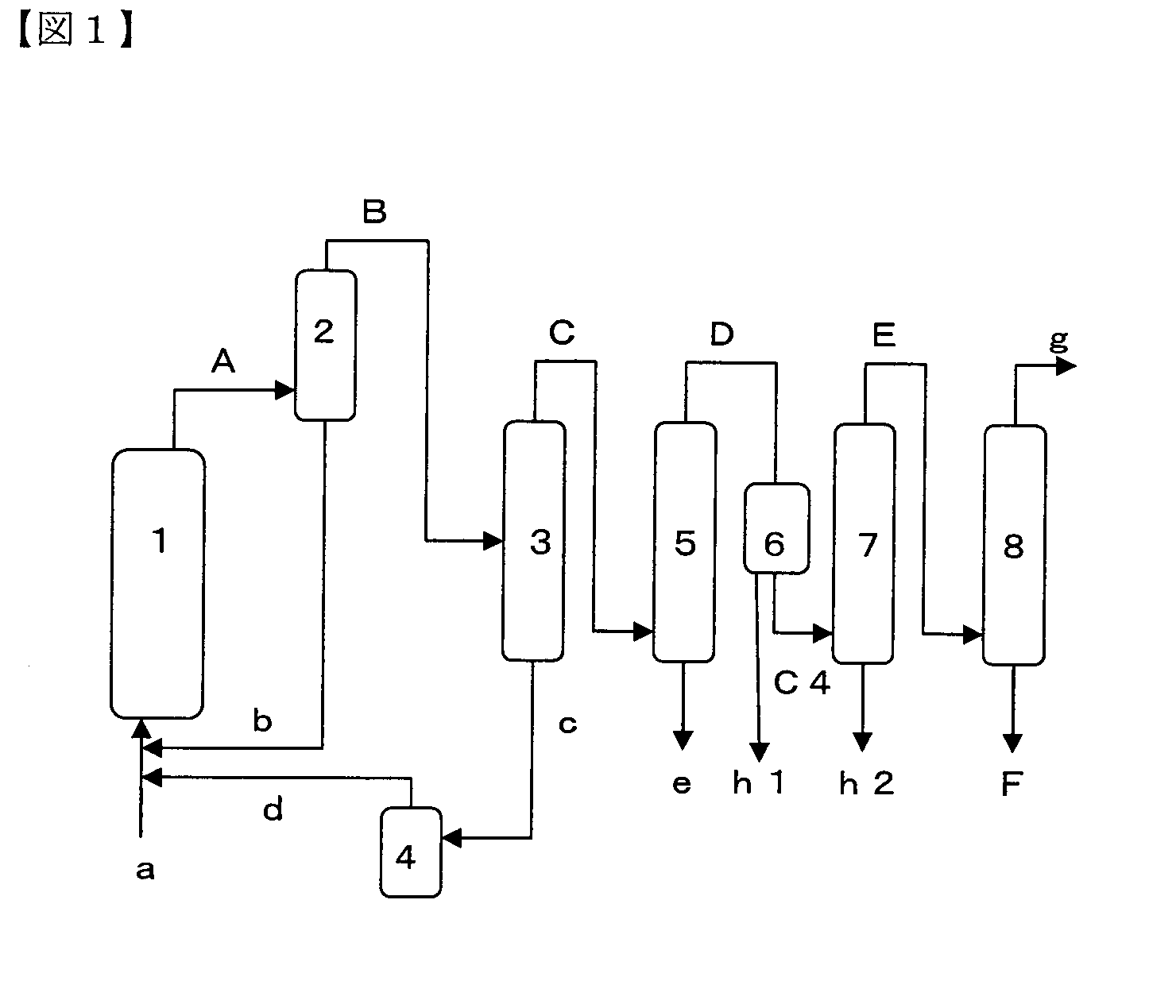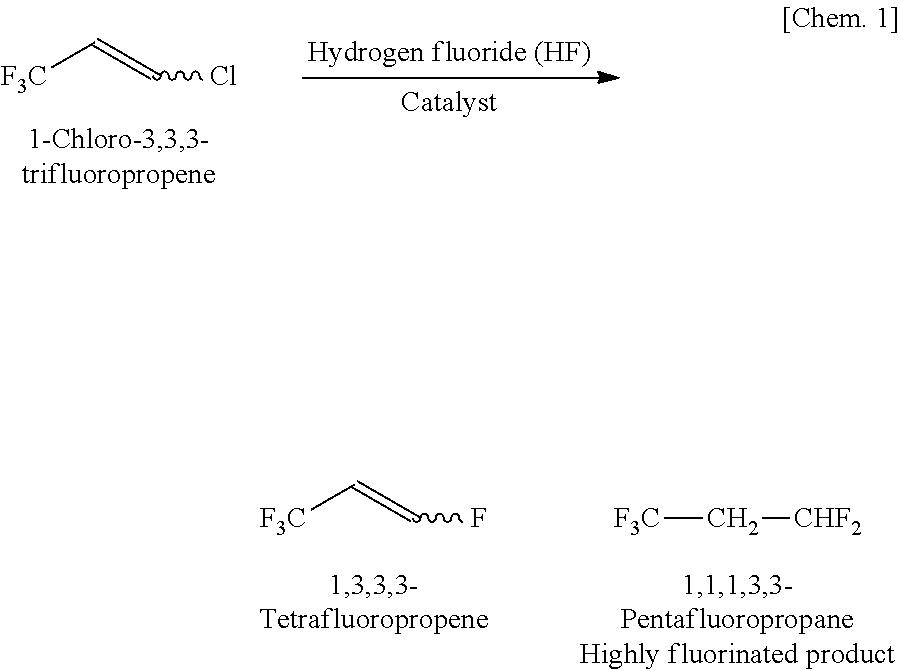Production Method Of Trans-1,3,3,3-Tetrafluoropropene
a production method and technology of tetrafluoropropene, applied in physical/chemical process catalysts, halogenated hydrocarbon preparations, metal/metal-oxide/metal-hydroxide catalysts, etc., can solve the problems of poor selectivity, yield, and difficulty in separating acidic by-product components of 1,3,3,3-tetrafluoropropene in the formation reaction of 1,3,3,3-tetrafluoropropene, and achieve high yield
- Summary
- Abstract
- Description
- Claims
- Application Information
AI Technical Summary
Benefits of technology
Problems solved by technology
Method used
Image
Examples
preparation example 1
[Catalyst Preparation Example 1]
[0185]In this example, the fluorination catalyst was prepared by providing fluorinated alumina upon contact of activated alumina with hydrogen fluoride, and then, supporting chromium on the fluorinated alumina The detailed catalyst preparation procedure is as follows.
[0186]First, 1200 g of activated alumina of 2 mm to 4 mm particle size (available from Sumitomo Chemical Co., Ltd. under the trade name of “NKHD-24”, specific surface: 340 m2 / g) was weighed out and washed. Further, 10 mass % hydrofluoric acid was prepared by dissolving 460 g of hydrogen fluoride into 4140 g of water. While stirring the 10 mass % hydrofluoric acid, the washed activated alumina was gradually added to the 10 mass % hydrofluoric acid. The resulting mixture was left still for 3 hours. After that, the activated carbon was washed with water, filtered out, and then, dried by heating at 200° C. in an electric furnace for 2 hours. A gas-phase reaction apparatus was packed with 1600...
preparation example 2
[Catalyst Preparation Example 2]
[0187]In 150 g of pure water, 100 g of coconut shell pulverized activated carbons under 4×10 mesh size (available from Calgon Carbon Japan K. K. under the trade name of “PCB” was immersed. Further, a solution was separately prepared by dissolving 40 g of CrCl3.6H2O (special grade reagent) into 100 g of pure water. The above prepared activated carbon was mixed and stirred in the separately prepared solution. The resulting mixture was left still for one day. After that, the activated was filtered out and baked by heating at 200° C. in an electric furnace for 2 days. The above-obtained chromium chloride-supporting activated carbon was packed into a cylindrical reaction tube of SUS316L of 5 cm in diameter and 90 cm in length. While flowing nitrogen gas through the reaction tube, the reaction tube was heated to 200° C. At the time the distillation of water from the reaction tube was no longer seen, hydrogen fluoride was introduced into the reaction tube to...
process example 1
[0199]As the gas-phase reactor 1, a cylindrical reaction tube of stainless steel (SUS316L) of 52.7 cm in inside diameter and 58 cm in length was provided. The gas-phase reactor 1 was packed with 1200 ml (1200 cm3) of the fluorination catalyst of Catalyst Preparation Example 1.
[0200]Further, a distillation column was provided as the rough separation column 2 at a downstream side of the gas-phase reactor 1. A cooling condenser was arranged at a top side of the distillation column to liquefy the top distillate whereas a heating bath was arranged at a bottom side of the distillation column to heat the distillation bottom product. The rough separation column 2 was 54.9 mm in inside diameter and 40 cm in length and was packed with 6 mm Raschig rings.
[0201]The formation reaction of trans-1,3,3,3-tetrafluoropropene (trans-TFP) from 1-chloro-3,3,3-trifluoropropene (CTFP) and hydrogen fluoride (HF) was carried out in the gas-phase reactor 1. In the reaction, the reaction temperature was set t...
PUM
| Property | Measurement | Unit |
|---|---|---|
| Temperature | aaaaa | aaaaa |
| Temperature | aaaaa | aaaaa |
| Pressure | aaaaa | aaaaa |
Abstract
Description
Claims
Application Information
 Login to View More
Login to View More - R&D
- Intellectual Property
- Life Sciences
- Materials
- Tech Scout
- Unparalleled Data Quality
- Higher Quality Content
- 60% Fewer Hallucinations
Browse by: Latest US Patents, China's latest patents, Technical Efficacy Thesaurus, Application Domain, Technology Topic, Popular Technical Reports.
© 2025 PatSnap. All rights reserved.Legal|Privacy policy|Modern Slavery Act Transparency Statement|Sitemap|About US| Contact US: help@patsnap.com



